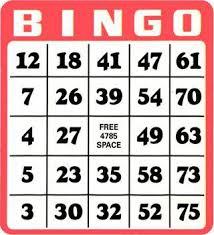Are Your Salespeople Selling Naked Today?
By Mark Roberts
As companies adjust and learn to sell in the midst of a pandemic we need to clearly understand our buyers and the problems they have now and the skills our salespeople need to be effective. Unfortunately many salespeople are using dated value propositions, sales processes, sales tools and lack sales skills training …they are selling naked.
One of my favorite children’s is a book: The Emperor’s New Clothes. If you are not familiar with the story: there once was an emperor who spent a great deal on money on clothes. One day two swindlers came to town and said they would make the emperor clothes the most beautiful he has ever seen, but if anyone could not see the clothes they were unfit for their positions.
The deception begins and the emperor does not want to admit he can’t see the clothes so he pretends to put on this invisible garment. His minister does not want to admit they do not see it in fear of being judged unfit so they pretend to see it and they compliment the emperor.
The emperor proceeds to walk around town naked and no one tells him until he comes across a little boy who is our heretic in this story and shares the emperor is naked.
I was recently asked to be a guest on the popular podcast MFG Out loud and the hosts were intrigued by this idea of salespeople being forced to sell naked and they asked I unpack this topic a bit. In this post we will discuss the 7 signs your sales team is selling naked.
1.) If your sales team cannot quickly share your repeatable sales process…they are selling Naked!
Let’s start with the sales process itself.
The process of sales does not need to be as difficult as we make it.
Market leading organizations understand it all starts with understanding your market, buyers, and the process and criteria they use to make buying decisions.
Once you have a clear understanding of your buyers you position your product or service in your market with a value proposition that resonates with your buyers and you are on a path to a sale.
When I work with sales teams we discover with our skills assessment they do not have a formal repeatable sales process and this is an interruption for most CEO’s. Their salespeople are basically winging it each day, with each customer and on each call.
I refer to winging it as “random acts of sales.”
(no wonder CEO’s are frustrated that sales seems like more of a dark art than a science)
As businesses reset and retool we can’s afford random acts of sales and must give sales teams a system to follow that drives the profitable outcomes we expect.
This can quickly be corrected with voice of the customer research and conducting a sales skills assessment.
Once you develop a sales process based on how your buyers are buying you must train your sales team and coach them to use each step..
2.) If your sales team cannot share your value proposition …they are selling Naked!
If your sales team is using a dated value proposition it will no longer resonate with your buyers and will damage the buyers perception of your salesperson’s competency and their ability to trust them.
When your sales team lacks a current value proposition and distinction from competitors they are being asked to sell naked.
We can create a value proposition that connects with your top buyer personas and train your salespeople when and how to use them as we develop their selling skills.
3.) If your sales team has not received sales skills training…they are selling Naked!
With as high as 50% of salespeople not receiving any sales skills training we should not be surprised when we observe clogged or non existent sales pipelines.
We should not become angry when salespeople sell on price and not value.
We should not become disappointed when salespeople lack the ability to strategically grow their current customers.
The good news is this is easily corrected with sales skills training and prescriptive analytics.
4.) If your sales team has not received business acumen training …they are selling Naked!
Today’s buyers want and value salespeople who deliver ways to add more value to their bottom-line.
How can your salespeople sell based on value if they do not have business acumen training?
Are your salespeople speaking the language of business and able to create a compelling business case?
5.) If your website has not been updated in the last year…they are selling Naked!
With as high as 70% of the sales process being over before a buyer speaks with your salesperson your website is more critical than ever.
The difficulty arises when companies have a website that is more of a virtual brochure about them and not the problems that they solve for their customers and not leveraging digital marketing best practices.
Buyers are searching for solutions to their problems. They are looking for companies and salespeople who can provide more than a transaction.
Does your website share the problems you solve?
Do you offer e-commerce for buyers who know what they want and can quickly and easily buy?
In the last 90 days have you adjusted your value proposition and messaging on your website based on the needs of your buyers today?
6.) If you have not provided virtual sales skills training…they are selling Naked!
Covid-19 has impacted the way we serve our customers.
Many states implemented constraints that caused salespeople to sell virtually.
A big issue we need to unpack is almost 60% of salespeople will have difficulty working remotely without training and coaching. (This statistic comes from the sales skills assessment tool I use that has assessed over 2 million salespeople globally.)
Have you provided your salespeople virtual sales skills training and the technical tools to be effective and efficient in virtual sales?
Have you trained and coached your salespeople how to build meaningful business relationships virtually?
Are your salespeople calling all your current customers and implementing a retention strategy?
7.) If you have not assessed your sales teams’ skills by role…they are selling Naked!
How effective is your sales team today?
How much more effective could they be?
How long would it take to improve their sales effectiveness?
What impact would improving your sales team’s effectiveness have on your bottom line?
Are your salespeople selling based on value or just price?
All of the above and much more can be answered by conducting a sales skills assessment. With this valuable information you can quickly make sure you have the right people in the right roles and develop sales skills training to close any skills gaps you discover.
With all the changes we have seen in the last 90 days it’s imperative you have the right salesperson in the right role with the right skills.
As I shared in a recent podcast, Warren Buffet’s quote is particularly relevant in today’s business climate
“ When the tide goes out you can tell who has been swimming naked”
90 days ago the biggest challenge most businesses had was finding and retaining employees to support their growth
Business was good and growing.
Many leaders had plans to invest in sales skills training, digital marketing and exploring inside sales models. But sales were coming in and they did not want to rock the boat. They were so busy in the business they did not have time to work on the business.
As the revenue tide went out for many businesses, it became very apparent their sales teams needed training and coaching.
With as high as 50% of salespeople not receiving any formal sales skills training in skills like: qualifying, discovery, up selling, cross selling, consultative sales, how to build strategic business relationships, negotiations skills, value based sales skills, closing skills we should not be surprised many sales people are struggling and selling naked today.
Unlike the king in our story the sad reality is your salespeople in many cases know they are selling naked.
They may not call it “selling naked” but what they have always done is no longer working today
The sales team and sales managers know something is wrong but they do not know what it is
Some are just trying harder and working longer hours making more phone calls and growing more stressed, frustrated and fearful each day.
Are your salespeople selling naked today?
If any one of the 7 signs I shared is happening in your organization your team is selling naked and losing sales they could have won.
Spend time assessing your sales teams skills and the voice of your customers and provide your salespeople the training tools and coaching to help them stop feeling naked and afraid when calling buyers today.
If you would like my help assessing your sales skills, net profit by customer and understanding the current voice of your customers let’s schedule a call.
To learn more about selling naked you can visit this post titled: Stop Asking your Salespeople to Sell Naked





